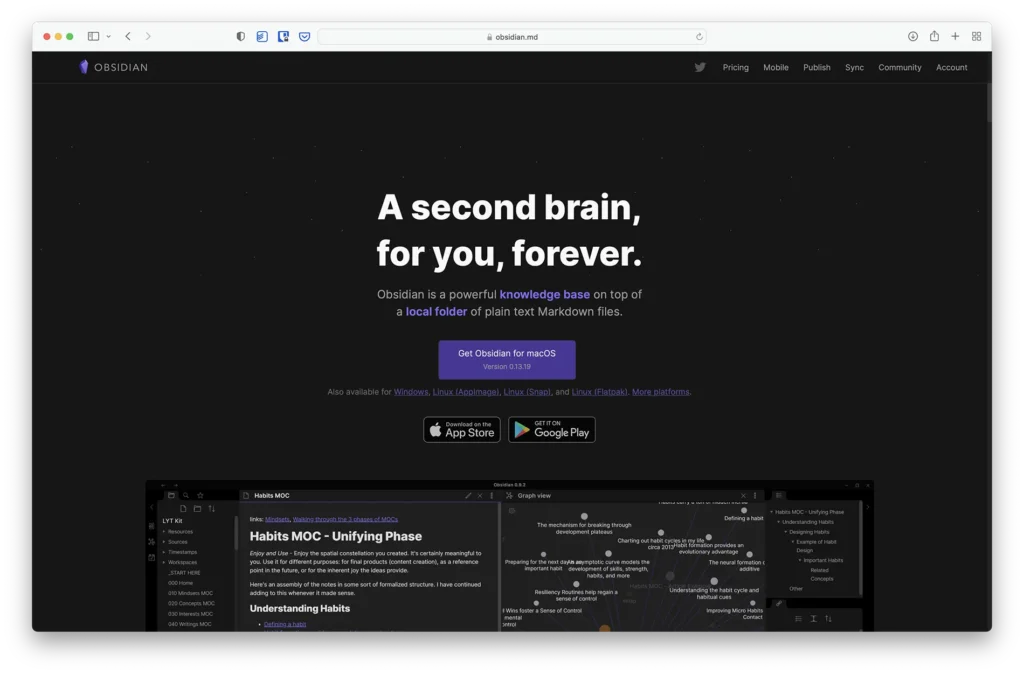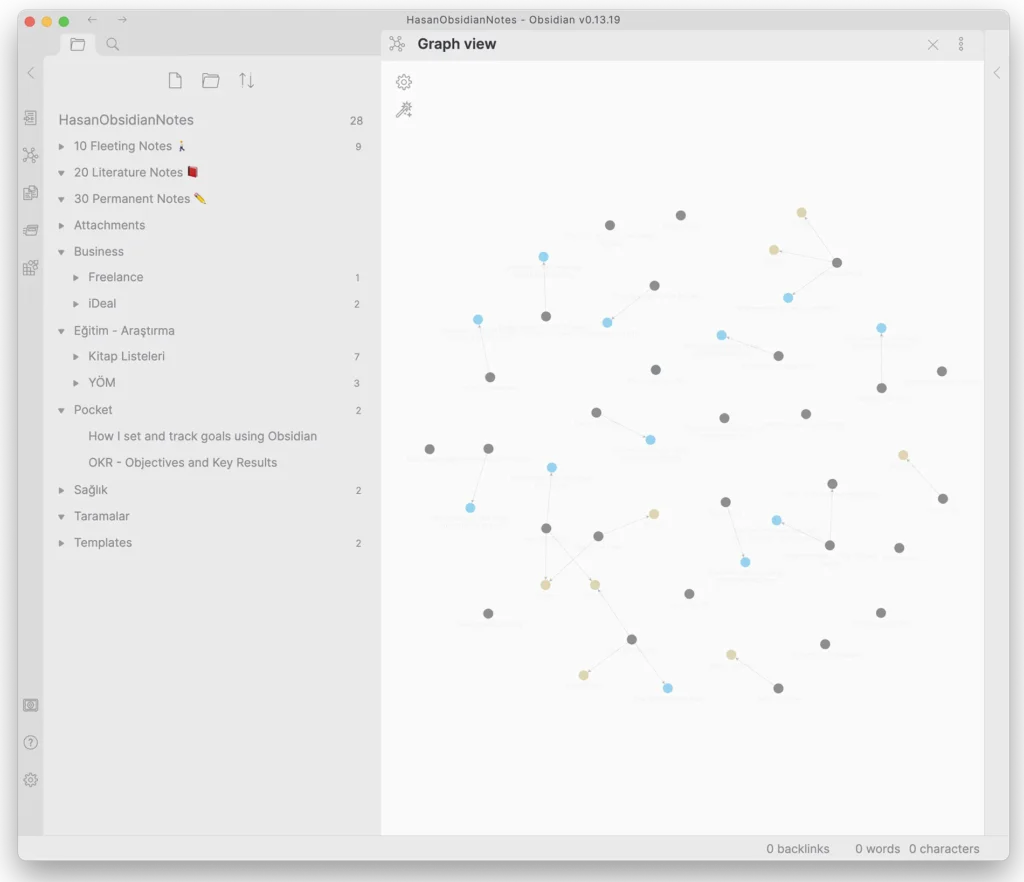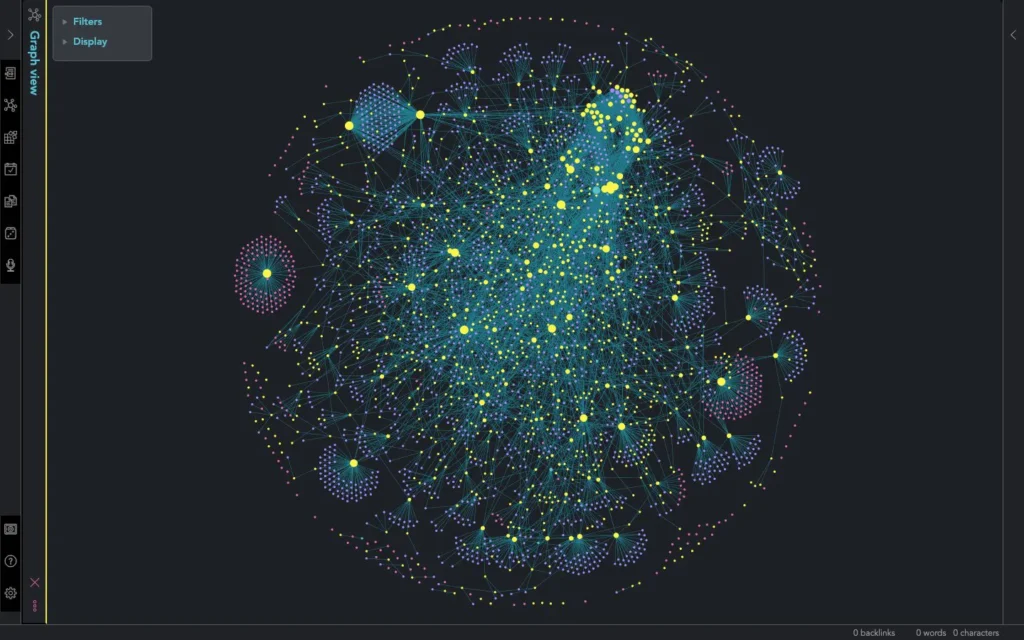Store Your Research and Ideas Just Like in Your Mind
As a professional who believes in lifelong learning, I’ve always found that taking notes and making connections during research plays a big role in learning effectively. In this post, I want to share my experience with Obsidian, an app I’ve recently started using for note-taking and collecting information.

At its core, Obsidian is a note-taking application. But compared to the popular ones many of us use daily (like Apple Notes, Microsoft OneNote, or Evernote), the main difference lies in how it lets you organize and connect your notes.
Obsidian is a PKM (Personal Knowledge Management) tool. Personal Knowledge Management can be seen as a system that helps you organize the massive amount of information we can now access easily, making it easier to find later when you need it.
Every day we receive information from so many sources—articles, books, conversations, social media, TV, magazines. With such a heavy flow, our memory alone is no longer enough to store and recall everything, at least not for me. Of course, you can take notes on paper or in notebooks, but the real challenge is keeping those notes organized, accessing them when you’re not home, and quickly recording ideas when they come.
So, what does Obsidian actually do?
Obsidian helps solve this problem by letting you record your information, classify it, and visualize the bigger picture. Some of its strongest features are:
Uses Markdown for formatting (I’ll cover this in detail in another post)
Stores your notes as plain text in your file system, not in a closed database (so you won’t lose them if Obsidian stops being developed)
Offers different ways to organize notes:
Folders for hierarchical structure
Tags for flexible categorization
Links (one-way or two-way) to connect notes directly
Quick and practical methods for tagging and linking
Graph view to see your notes and their connections visually
Works in the cloud if you want
Supports plugins for extra features
Light/dark themes and customization
Completely free for personal use
Mobile apps for phones and tablets so you can access your notes anywhere
Is Obsidian an alternative to Evernote or OneNote?
My answer is: both yes and no.
You can attach files to your notes in Obsidian and keep everything in your file system. For example, you can create a note and embed an image you clipped from a website. But if you mainly use note-taking apps for archiving scanned documents, doing OCR searches, clipping directly from browsers, and syncing securely in the cloud, then Evernote might still be better.
On the other hand, if your main focus is archiving your own notes, doing research on a topic, and building new ideas through connections, Obsidian (or similar apps) is much more powerful.

Ways to Organize Notes
As mentioned, Obsidian offers three main methods to organize your notes:
Folders
The classic method. You place notes inside folders and subfolders. The advantage is familiarity, but the downside is deciding where to put a note if it fits in more than one place.Tags
An alternative to strict folders. You can add hashtags (like#workNotesor#workNotes/Legonimbus) directly in your notes. A note can have multiple tags, and tags can also be hierarchical.

3. Links
To me, this is Obsidian’s most powerful feature. You can link one note to another using [[note_name]]. You can even embed the linked note inside your current one.
For example, if you’re researching a topic, you can save notes from different websites separately, then build a summary note that links to them all.

Graph View
Another strong feature of Obsidian is the graph view, which shows how your notes are connected.

In the above example, you can see how notes about LEGO Nimbus programs are linked together. Of course, with just a few notes, the graph looks simple. But when you’ve been using Obsidian for a long time, the maps become very rich and give you completely new perspectives. You can even drag a node to see the cluster of notes around it.
Here’s an example: one user with over 3,600 notes has a graph view that looks like a real “map of knowledge.”

There are plenty of tutorials and walkthroughs on YouTube about Obsidian. If you’re someone who takes notes regularly, I highly recommend trying it out. Best of all, it’s free to use on Mac, Windows, and Linux.
See you in the next post!
PS: This blog post is translated by AI from my old blog.



